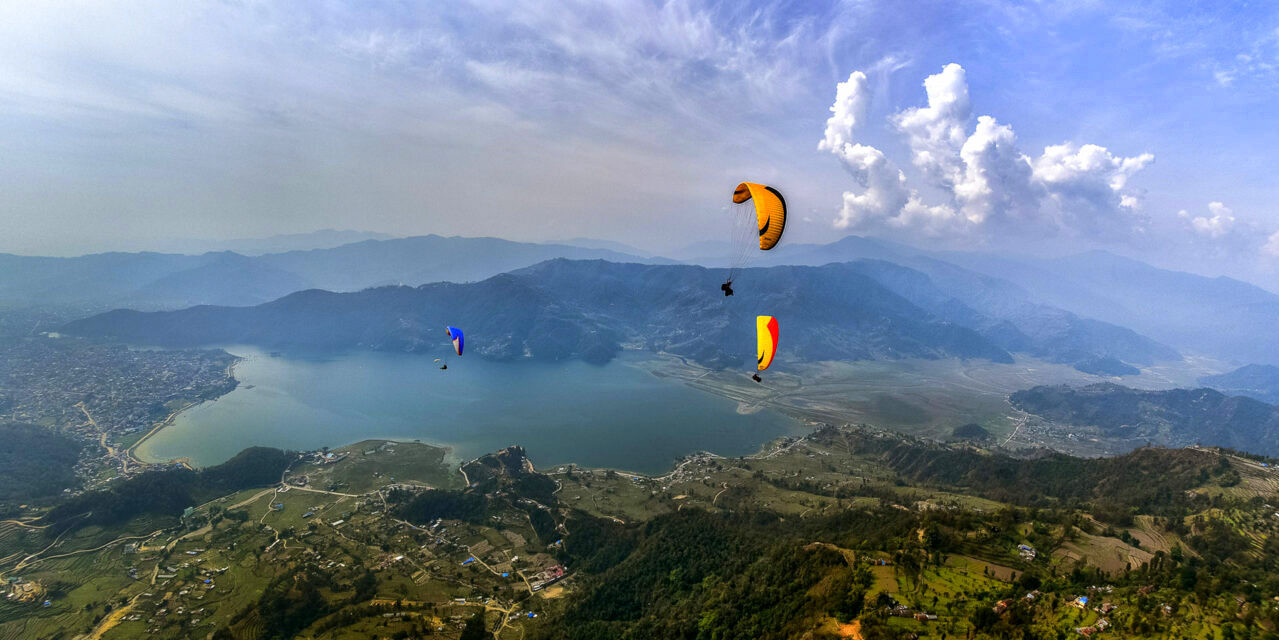Everest Base Camp Trek
The Everest Base Camp Trek is one of the most iconic and exhilarating adventures in Nepal, attracting trekkers from all around the globe who come to experience the challenge and majesty of walking in the shadows of the world’s highest peak, Mount Everest. This trek is not just about the physical journey; it's an exploration of the Sherpa culture and an encounter with the rich biodiversity of the Sagarmatha National Park.
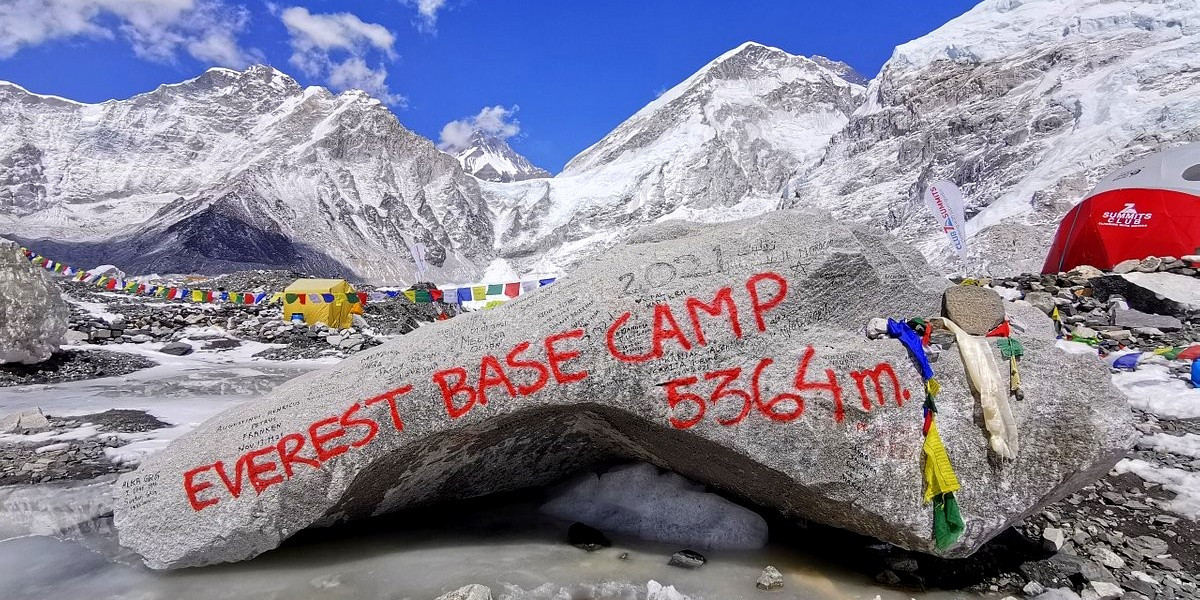
Key Features of the Everest Base Camp Trek
-
Scenic Flight to Lukla: The trek typically begins with a short but thrilling flight from Kathmandu to Lukla, one of the most dangerous airports in the world, due to its short runway and dramatic location.
-
Sherpa Culture and Hospitality: As you trek through iconic Sherpa villages like Namche Bazaar, Tengboche, and Dingboche, you'll gain insights into the life and culture of the Himalayan people. The region is dotted with monasteries, chortens, and prayer flags adding to its spiritual ambiance.
-
Stunning Himalayan Views: The path affords incredible views of some of the highest peaks in the world, including Everest, Lhotse, Nuptse, and Ama Dablam. The viewpoint from Kala Patthar offers a breathtaking panoramic view of these mountains, especially at sunrise.
-
Sagarmatha National Park: This UNESCO World Heritage Site is home to a variety of wildlife, including the elusive snow leopard, Himalayan tahr, and several bird species like the Impeyan pheasant.
-
Everest Base Camp: The climax of the trek is reaching the Base Camp, which serves as a rudimentary campsite for mountaineers aiming to scale Everest. Standing at the base of the world’s tallest mountain is an awe-inspiring experience.
Practical Information
-
Duration: The trek usually takes about 12 to 14 days, depending on the route and the pace of trekking.
-
Difficulty: It is a strenuous trek that requires a good level of fitness and acclimatization to avoid altitude sickness.
-
Best Time to Visit: The best times to embark on the Everest Base Camp Trek are from March to May during the spring season and from September to November during the autumn season, as these months offer clearer skies and more stable weather conditions.
-
Preparation and Gear: Proper preparation is essential for a successful trek. This includes physical training, securing the appropriate trekking permits, and packing the right gear such as warm clothing, trekking boots, a sleeping bag suitable for freezing temperatures, and a first-aid kit.
The Everest Base Camp Trek with Relax Getaways means you’ll have expert guides with local knowledge to lead the way, ensuring safety and enriching the trek with historical and cultural insights. This trek not only challenges your physical limits but also expands your understanding of the world and yourself, making it a truly transformative journey.
Annapurna Circuit
The Annapurna Circuit is revered as one of the most spectacular treks in the world, offering an incredibly diverse array of breathtaking mountain scenery, combined with rich cultural experiences. This trek circles the Annapurna massif, providing trekkers with an opportunity to immerse themselves in the landscapes and cultural diversity of Nepal’s Himalayan region.
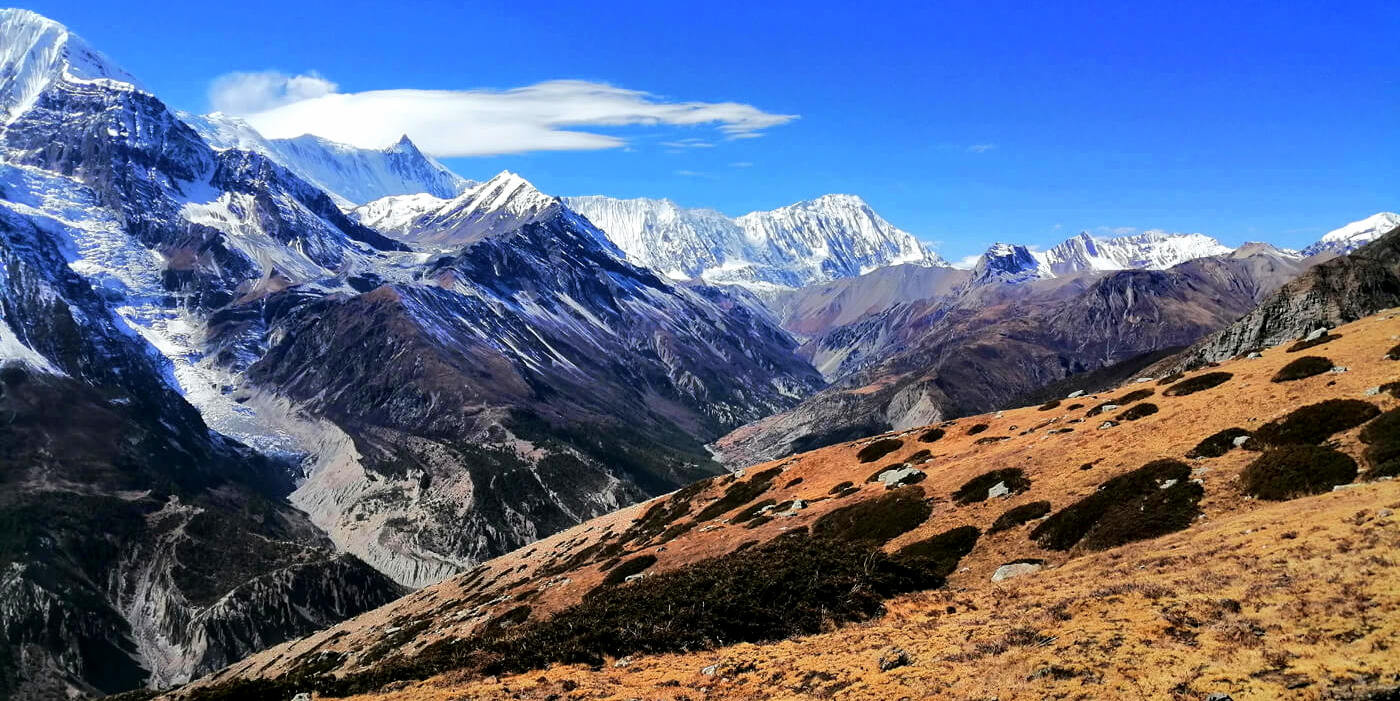
Key Features of the Annapurna Circuit
-
Diverse Ecosystems and Landscapes: The circuit traverses a variety of terrains, from lush subtropical forests and paddy fields in the lower reaches to high mountain passes covered in ice and snow. The trek provides dramatic changes in scenery as altitudes vary.
-
Thorong La Pass: One of the highlights and the highest point of the trek is crossing the Thorong La Pass at 5,416 meters (17,769 feet). This challenging ascent offers unforgettable views and a sense of achievement that is hard to match.
-
Cultural Richness: The route passes through various villages of different ethnic groups, including Gurung, Manangi, and Thakali communities, offering trekkers a glimpse into the rural life of Nepal. Each village along the way has its own unique culture, traditions, and often their own dialects.
-
Religious Sites: The trek is not just about natural beauty but also spiritual exploration. The path includes several monasteries, temples, and prayer wheels, most notably the Muktinath Temple, a sacred site for both Hindus and Buddhists.
-
Natural Hot Springs: After long days of trekking, you can relax in natural hot springs near Tatopani, which are believed to have healing properties.
Practical Information
-
Duration: The full circuit can take anywhere from 12 to 21 days depending on the itinerary and side trips chosen.
-
Difficulty: It is considered a moderate to challenging trek, suitable for reasonably fit individuals, as it involves long trekking days and crossing high altitude passes.
-
Best Time to Visit: The optimal times for the Annapurna Circuit are during the spring (March to May) and autumn (September to November) seasons, when the weather is generally clear and warm, offering the best views and conditions for trekking.
-
Preparation and Gear: Adequate preparation is crucial for the Annapurna Circuit. Essential gear includes sturdy trekking boots, several layers of clothing to accommodate the diverse climates, a good quality sleeping bag, and trekking poles. Acclimatization days are important to reduce the risk of altitude sickness.
Trekking the Annapurna Circuit with Relax Getaways ensures you have experienced guides and porters who not only enhance your journey with their local knowledge and expertise but also handle logistical aspects, allowing you to fully immerse yourself in the experience. This trek offers a remarkable adventure that combines physical challenges with cultural insights, set against some of the most stunning backdrops in the world.
Kathmandu Valley Cultural Tour
The Kathmandu Valley Cultural Tour encapsulates the essence of Nepal's rich history, vibrant culture, and architectural grandeur. This tour is perfect for those who wish to dive deep into the cultural heart of Nepal without venturing into the high-altitude regions. Kathmandu Valley, with its three historic cities—Kathmandu, Patan, and Bhaktapur—offers an incredible array of ancient temples, palaces, and squares, each telling stories of a bygone era.
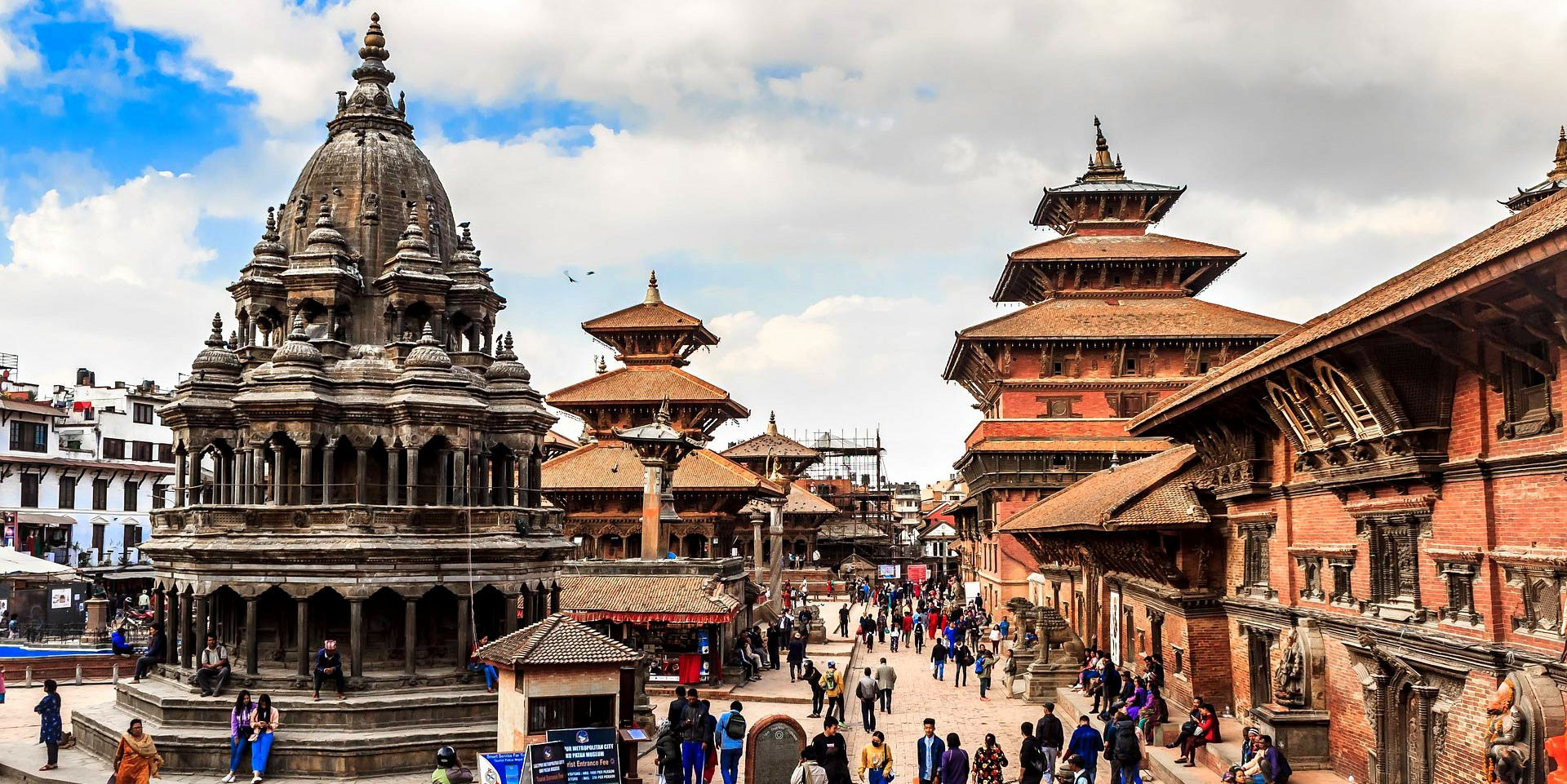
Key Features of the Kathmandu Valley Cultural Tour
-
Historic Durbar Squares: Each of the three cities in the valley boasts a Durbar Square, which is a UNESCO World Heritage site. These squares are the epicenters of historical and cultural activities in their respective cities, featuring palaces, temples, and public spaces that date back hundreds of years.
-
Swayambhunath and Boudhanath Stupas: These stupas are among the most sacred Buddhist sites in Nepal. Swayambhunath, located on a hill overlooking Kathmandu, is famously known as the Monkey Temple due to the large number of monkeys that reside there. Boudhanath Stupa is one of the largest spherical stupas in Nepal and the world, surrounded by a bustling market and Tibetan monasteries.
-
Pashupatinath Temple: This is one of the most significant Hindu temples of Shiva in the world. Located on the banks of the Bagmati River, it is a site of both daily religious rites and cremation ceremonies. The temple complex is a profound cultural experience, reflecting the spiritual and historical traditions of the Nepalese people.
-
Patan and Bhaktapur: Known for their artisan communities and medieval architecture, Patan and Bhaktapur offer a more tranquil experience compared to the bustling Kathmandu. Patan is renowned for its craftsmanship in metal and wood, showcased in the Patan Museum and the city's ornate Durbar Square. Bhaktapur feels like stepping back in time with its well-preserved palace courtyards and old city center, famous for pottery and weaving.
-
Local Cuisine and Crafts: The tour is not complete without delving into the local cuisine, which includes delicacies like momos (dumplings), dal bhat (rice and lentils), and Newari dishes, which are indigenous to the Kathmandu Valley. Visitors can also explore local markets that are vibrant with handmade crafts, traditional clothing, and unique souvenirs.
Practical Information
-
Duration: A thorough exploration of Kathmandu Valley can be achieved in about 3 to 5 days, making it an excellent option for those who prefer less physically demanding activities but wish to experience rich cultural engagement.
-
Accessibility: This tour is accessible to all levels of physical fitness and is particularly appealing to those interested in history, architecture, and culture.
-
Best Time to Visit: Kathmandu Valley can be visited year-round, but the best times are during the spring and autumn seasons when the weather is mild and the skies are clear, offering the best conditions for sightseeing.
-
Guided Tours: Opting for a guided tour with Relax Getaways enhances the experience, as knowledgeable local guides provide deeper insights into the historical and cultural significance of the sites visited.
The Kathmandu Valley Cultural Tour with Relax Getaways offers more than just a sightseeing experience—it's an immersive journey into the heart of Nepal’s cultural heritage, filled with stories and traditions that continue to enrich the lives of visitors and locals alike.
Chitwan National Park Safari
The Chitwan National Park Safari is a highlight for wildlife enthusiasts and adventure seekers visiting Nepal. This first national park of Nepal, established in 1973 and a UNESCO World Heritage site since 1984, is renowned for its biodiversity and efforts in conservation, particularly the successful protection of the one-horned rhinoceros and the Bengal tiger.
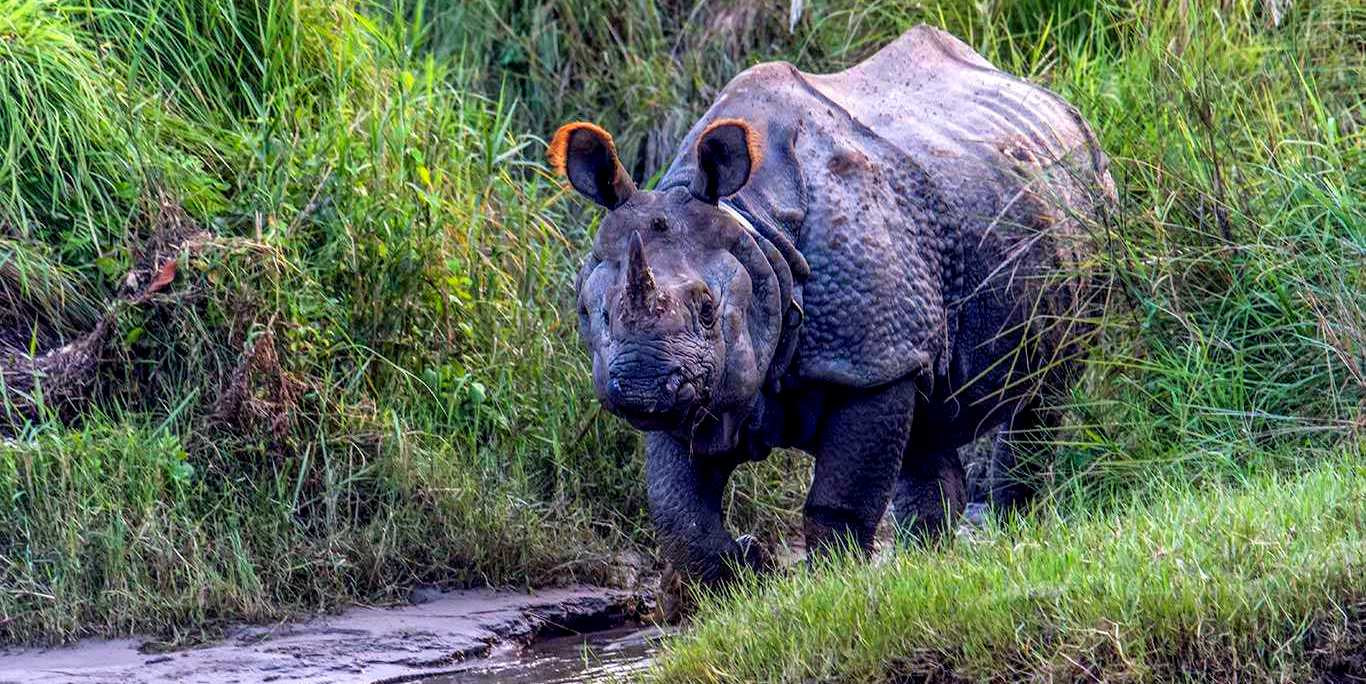
Key Features of the Chitwan National Park Safari
-
Diverse Wildlife: Chitwan is home to over 700 species of wildlife, including some of the most elusive species such as the Bengal tiger, one-horned rhinoceros, and leopard. The park also shelters several species of deer, sloth bears, and hundreds of bird species, making it a paradise for bird watchers.
-
Elephant and Jeep Safaris: Visitors can explore the dense forests and grasslands of the park via elephant-back or on a Jeep safari. These safaris offer a unique vantage point for spotting wildlife and experiencing the park's vast ecosystems up close.
-
Canoe Rides: A serene canoe ride down the Rapti or Narayani River provides a different perspective of the park, allowing guests to observe aquatic life and come closer to the park’s abundant birdlife, including the chance to see crocodiles sunning themselves on the riverbanks.
-
Tharu Cultural Experiences: The local Tharu community, known for their unique culture and traditions, plays a vital role in the region. Visitors can experience Tharu cultural performances and visit local villages to learn about their way of life, which has been intertwined with the jungle for centuries.
-
Conservation Efforts: Chitwan is not only a place for adventure but also a site of significant conservation success stories, particularly in the protection of the rhino population. Educational tours regarding conservation efforts and the challenges faced by the park are conducted regularly.
Practical Information
-
Duration: A typical safari in Chitwan can range from a day trip to several days, depending on the depth of exploration desired.
-
Best Time to Visit: The best time to visit Chitwan National Park is from October to March when the weather is cooler and visibility is at its best. The months of April and May offer the greatest chances of spotting wildlife, including tigers, due to the thinner vegetation and the animals coming out to water sources.
-
Accommodations: There are various accommodation options available from luxury lodges to budget guesthouses, all providing easy access to the park and its activities.
-
Getting There: Chitwan is accessible by road and air from Kathmandu and Pokhara, with the journey by road taking approximately 5-6 hours from either city.
Exploring Chitwan National Park with Relax Getaways ensures a comprehensive and responsible wildlife experience, led by experienced guides who enhance the safari with their knowledge of the ecosystem and the behaviors of the animals residing within it. This safari is not just an adventure; it's an insightful journey into the heart of Nepal's wildlife conservation.
Lumbini Pilgrimage Tour
The Lumbini Pilgrimage Tour invites travelers to the sacred birthplace of Siddhartha Gautama, the Lord Buddha, located in the serene plains of Nepal's Terai region. This tour is essential for anyone interested in Buddhism, spiritual growth, or historical exploration. Lumbini is a UNESCO World Heritage Site, recognized for its deep historical and spiritual significance and its role in fostering peace and understanding across different cultures and religions.
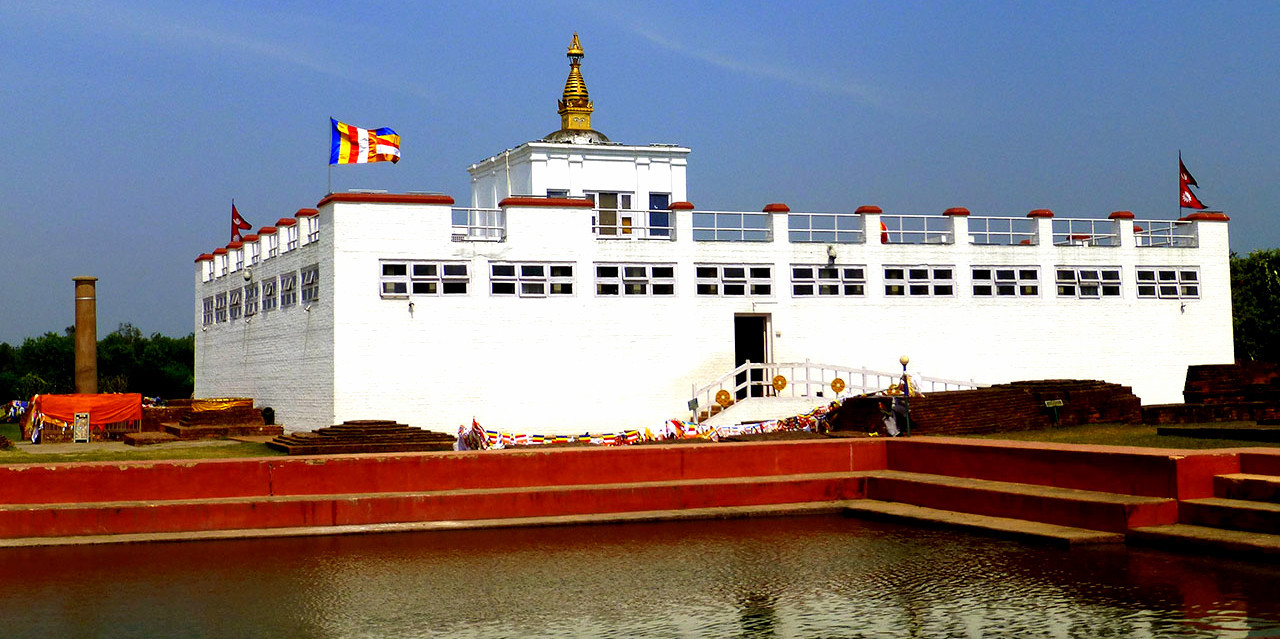
Key Features of the Lumbini Pilgrimage Tour
-
Sacred Garden: The focal point of Lumbini is the Sacred Garden, which contains the ancient Marker Stone, the exact spot where Queen Mayadevi gave birth to Siddhartha Gautama. The site is marked by the famous Ashoka Pillar, erected by Emperor Ashoka in 249 BC to commemorate his pilgrimage to this sacred site.
-
Mayadevi Temple: Adjacent to the Marker Stone, the Mayadevi Temple stands as a central shrine, housing relics and archaeological remains associated with Buddha's birth. The temple and its surroundings provide a profound sense of peace and spirituality.
-
Monasteries and Temples: Surrounding the Sacred Garden, over 25 international monasteries have been constructed by various Buddhist countries, each reflecting the architectural styles and traditions of their respective cultures. These include the Thai Monastery, Chinese Monastery, Korean Monastery, and many others, each offering a unique glimpse into the global Buddhist community.
-
Meditation and Reflection: Lumbini is not only a site for historical and cultural exploration but also a place for meditation and spiritual reflection. Visitors can participate in meditation sessions and spiritual teachings offered by various monasteries throughout the area.
-
Lumbini Museum and Lumbini International Research Institute: These institutions provide deeper insights into the life of Buddha and the development of Buddhism. They house an extensive collection of Buddhist manuscripts, relics, and artifacts.
Practical Information
-
Duration: The Lumbini Pilgrimage Tour can typically be covered in 1 to 2 days, but many visitors choose to stay longer for a more extensive spiritual exploration.
-
Best Time to Visit: The best time to visit Lumbini is between October and April when the weather is cooler and more comfortable for exploration. The monsoon season from May to September is less ideal due to heavy rains.
-
Accessibility: Lumbini is accessible by road and air. The closest airport is in Bhairahawa, just a short drive from Lumbini, with frequent flights from Kathmandu.
-
Accommodations: There are various accommodation options in and around Lumbini, ranging from basic guesthouses to more comfortable hotels, catering to the needs of pilgrims and tourists alike.
The Lumbini Pilgrimage Tour with Relax Getaways allows visitors to connect with the profound spiritual legacy of Buddha in a deeply immersive and respectful manner. This tour not only enriches one’s understanding of Buddhist teachings but also offers a unique opportunity to reflect on one's own spiritual journey amidst the tranquil landscapes of Lumbini.
Pokhara Leisure Tour
The Pokhara Leisure Tour showcases the serene beauty and relaxed atmosphere of Pokhara, Nepal's picturesque lakeside city that lies in the shadow of the magnificent Annapurna Range. This tour is perfect for those who wish to unwind and enjoy nature while indulging in leisure activities and exploring the vibrant culture of the region.
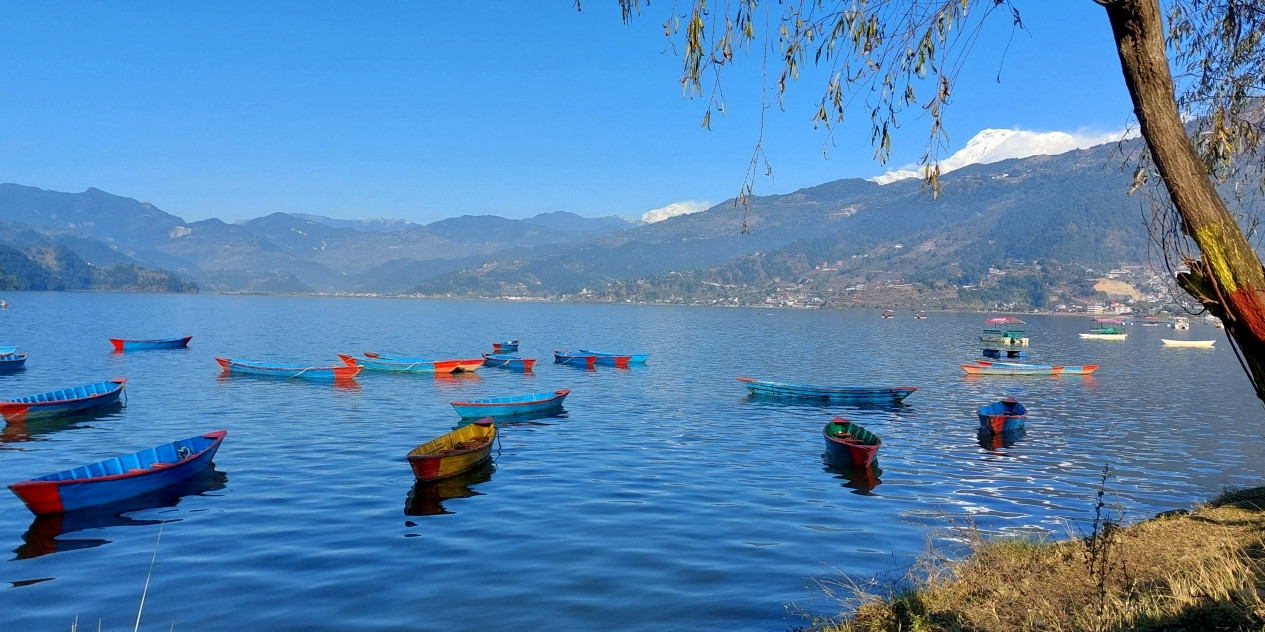
Key Features of the Pokhara Leisure Tour
-
Phewa Lake: The heart of Pokhara's leisure activities, Phewa Lake is the second largest lake in Nepal. Visitors can enjoy boat rides across the calm waters, with the stunning backdrop of the Annapurna mountains reflected on the lake's surface. The lakeside area is vibrant with shops, restaurants, and cafes, offering ample opportunities to relax and soak in the views.
-
World Peace Pagoda: Situated on a hill overlooking the lake, the World Peace Pagoda is one of Pokhara’s iconic landmarks, offering panoramic views of the city, the lake, and the surrounding mountains. It’s a great spot for photography and reflection.
-
Sarangkot: For those who love sunrise views, a morning trip to Sarangkot provides breathtaking views of the sun rising over the Annapurna and Dhaulagiri ranges. Sarangkot is also a popular spot for paragliding enthusiasts, offering thrilling flights over the Pokhara valley.
-
Adventure Sports: Pokhara is not just about leisure; it's also a hub for adventure sports. Options include paragliding, zip-lining, ultra-light flights, and bungee jumping, each offering a unique way to experience the natural beauty of the area.
-
Cultural Experiences: Explore the rich culture of the region with visits to local temples like Bindhyabasini Temple and museums such as the International Mountain Museum or the Gurkha Museum, which provide insights into the region’s mountaineering history and the famed Gurkha warriors.
-
Davis Falls and Gupteshwor Cave: These natural wonders are located close to each other and provide a fascinating half-day excursion. Davis Falls is a stunning waterfall that disappears into an underground tunnel, while Gupteshwor Cave features a shrine dedicated to Lord Shiva and offers views of the waterfalls from within.
Practical Information
-
Duration: The Pokhara Leisure Tour can be tailored from a day trip to several days depending on the depth of exploration desired.
-
Best Time to Visit: The best times to visit Pokhara are during the spring (March to May) and autumn (September to November) when the weather is clear and suitable for both sightseeing and adventure activities.
-
Accommodations: Pokhara offers a wide range of accommodation options, from luxury resorts to budget-friendly guesthouses, all providing excellent hospitality and views.
-
Getting There: Pokhara is well-connected to Kathmandu by road and air, with multiple flights daily and a scenic drive that takes about 5-6 hours.
Taking the Pokhara Leisure Tour with Relax Getaways allows you to experience the best of both relaxation and adventure. Whether you are enjoying a quiet boat ride on Phewa Lake, seeking thrills in the sky, or exploring the cultural heritage of the area, Pokhara offers a memorable escape into nature’s embrace.
Langtang Valley Trek
The Langtang Valley Trek is a mesmerizing journey into one of Nepal's most beautiful and accessible trekking destinations. Situated just north of Kathmandu, the trek offers a remarkable experience that combines natural beauty, unique cultural encounters, and stunning Himalayan scenery. It's an excellent alternative for those who seek a less crowded, yet equally rewarding Himalayan adventure compared to the more popular Everest and Annapurna treks.
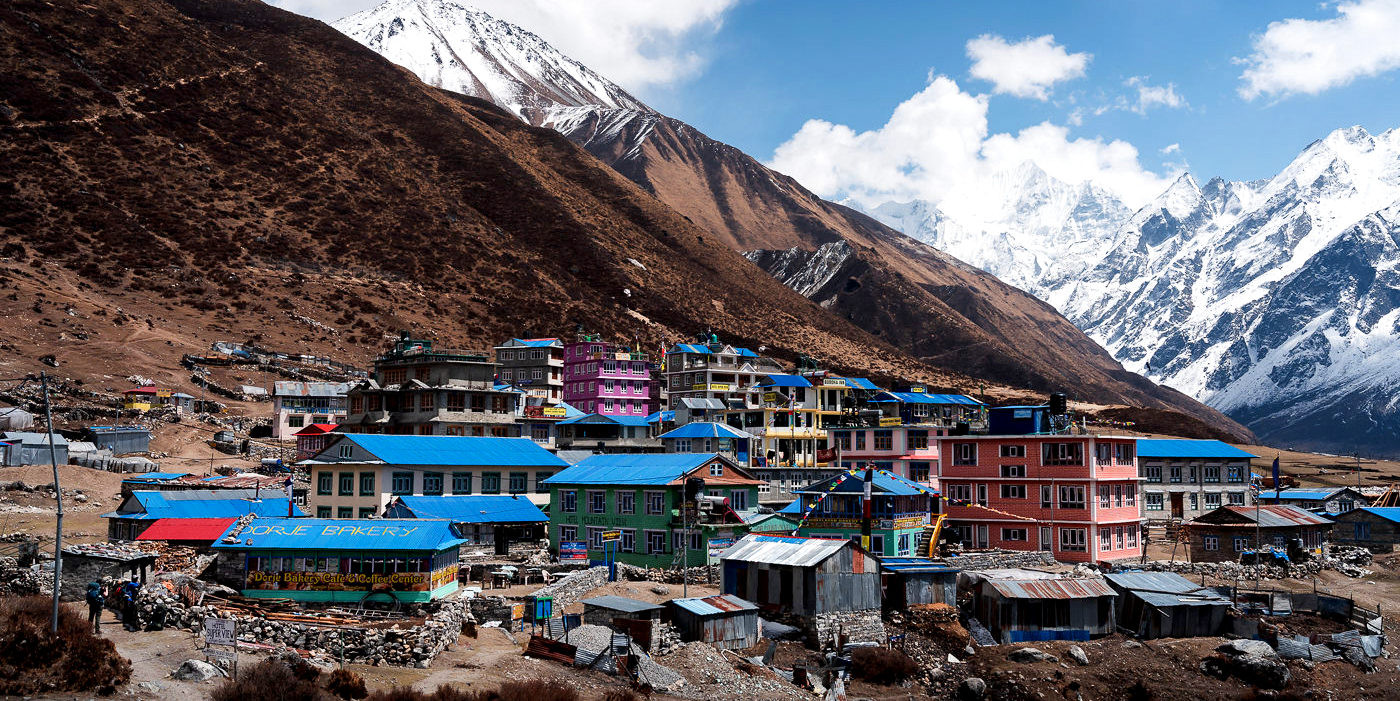
Key Features of the Langtang Valley Trek
-
Spectacular Scenery: The trek through Langtang Valley provides dramatic views of snow-capped mountains, sprawling meadows, and dense forests. Key peaks in the area include Langtang Lirung, Gang Chhenpo, and Dorje Lakpa.
-
Rich Tamang Culture: The valley is primarily inhabited by the Tamang people, whose culture and traditions are closely linked to Tibetan Buddhism. This trek offers a unique opportunity to experience their hospitable culture through village stays, monastery visits, and daily interactions.
-
Kyanjin Gompa: A highlight of the trek is the visit to Kyanjin Gompa, a Buddhist monastery situated at an altitude of 3,870 meters. The area around the gompa offers breathtaking panoramic views of the Langtang peaks. Trekkers often use Kyanjin Gompa as a base for day hikes and acclimatization.
-
Diverse Flora and Fauna: Langtang National Park, through which the trek route passes, is home to diverse wildlife, including the elusive red panda, Himalayan tahr, and black bear. The region's forests are a mix of bamboo, oak, and rhododendron trees, especially vibrant during the spring when the flowers bloom.
-
Accessibility: One of the advantages of the Langtang Valley Trek is its accessibility from Kathmandu. The journey to the starting point of the trek, Syabrubesi, is just a day's drive from the capital city.
Practical Information
-
Duration: The standard Langtang Valley Trek itinerary lasts about 7 to 9 days, making it an ideal choice for those with limited time who still want to experience high-altitude trekking in the Himalayas.
-
Difficulty: The trek is considered moderate in difficulty. It doesn't reach the extreme altitudes of some other Himalayan treks, but it still involves several days of walking at elevations above 3,000 meters.
-
Best Time to Visit: The best times to undertake the Langtang Valley Trek are during the spring (March to May) and autumn (September to November) seasons. These months offer the clearest skies and the most favorable weather conditions for trekking.
-
Preparation: Proper preparation for the Langtang Valley Trek includes packing suitable trekking gear, such as warm clothing, good hiking boots, and a sleeping bag. It is also advisable to bring a first-aid kit and necessary medications.
The Langtang Valley Trek with Relax Getaways provides an enriching experience as you explore the untouched natural beauty and vibrant culture of the Langtang region. This trek not only challenges your physical limits but also offers a profound glimpse into the lives of the Himalayan communities, making it a truly transformative journey.
Bhaktapur and Patan Day Tour
The Bhaktapur and Patan Day Tour offered by Relax Getaways is a splendid journey through time, exploring two of Kathmandu Valley’s most beautiful and historic cities. Each city boasts unique architectural marvels and a rich cultural heritage, making this tour a must for those interested in the arts, history, and traditional Nepalese culture.
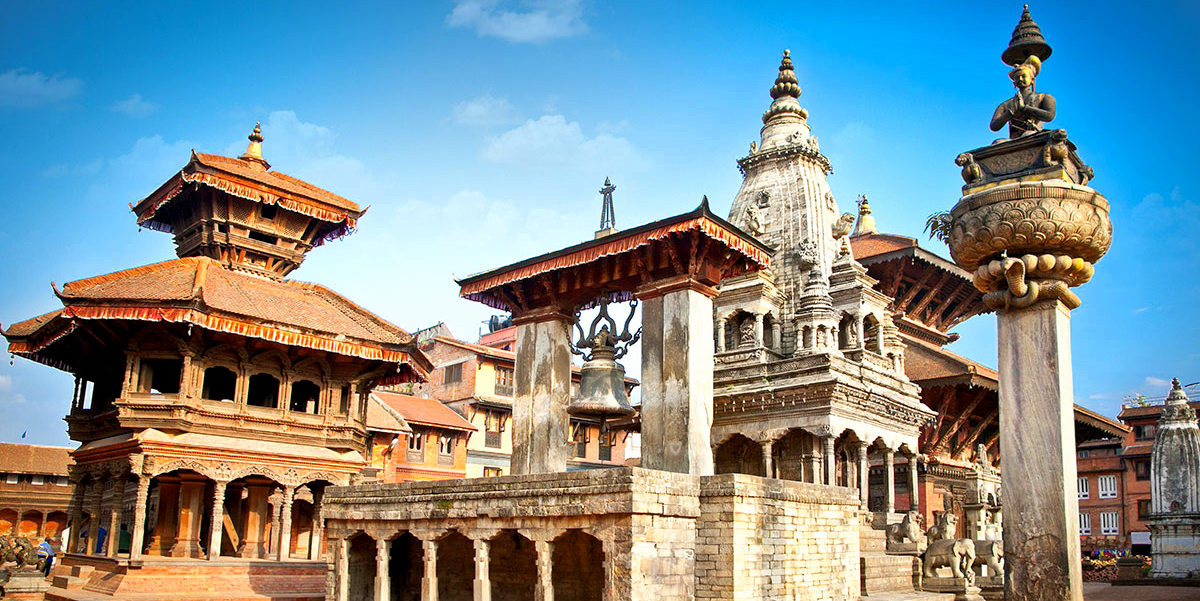
Key Features of the Bhaktapur and Patan Day Tour
-
Bhaktapur Durbar Square: This UNESCO World Heritage Site is the highlight of Bhaktapur, known for its exquisite art, culture, and architecture. As you wander through the square, you'll encounter various landmarks such as the Nyatapola Temple, Nepal’s tallest pagoda; the Golden Gate, which leads to the palace of fifty-five windows; and the pottery square where local artisans shape clay into beautiful pots.
-
Patan Durbar Square: Similarly, Patan Durbar Square is a focal point of Patan and features a concentration of ancient temples, palaces, and courtyards. Notable structures include the Krishna Mandir, built entirely from stone, and the Patan Museum, which houses an extensive collection of Nepalese art. The square is alive with the daily activities of local artisans and craftsmen who continue to practice traditional crafts passed down through generations.
-
Local Art and Craftsmanship: Both cities are renowned for their traditional crafts. Bhaktapur is famous for pottery and woodcarving, while Patan is known for its metalworks and thangka paintings. Visiting these cities provides a unique opportunity to see these artisans at work and to purchase authentic handcrafted items.
-
Cultural Immersion: The tour offers deep cultural insights into the lives of the Newar community, the indigenous inhabitants of the Kathmandu Valley. Their festivals, daily rituals, and cuisine provide a rich tapestry of experiences for visitors.
-
Architectural Splendor: The architecture in both cities showcases the skill and creativity of the Newar craftsmen, with intricately carved wooden windows, stately columns, and ornate palaces that date back to the Malla dynasty.
Practical Information
-
Duration: The Bhaktapur and Patan Day Tour typically lasts a full day, starting in the morning and concluding in the evening, making it an ideal itinerary for those who have limited time but want to experience a rich cultural and historical immersion.
-
Best Time to Visit: This tour can be enjoyed year-round, but the best time to visit is during the dry seasons from October to December and from March to April when the weather is pleasant and conducive to walking and exploration.
-
Getting There: Both Bhaktapur and Patan are easily accessible from Kathmandu. They are located within 30 minutes to an hour's drive from the city center, depending on traffic conditions.
-
What to Bring: Comfortable walking shoes are a must, as the tour involves a lot of walking on cobblestone streets. It’s also advisable to bring a camera to capture the stunning architecture and vibrant street life, along with some cash for entrance fees and personal purchases.
Exploring Bhaktapur and Patan with Relax Getaways not only enhances your understanding of Nepal’s architectural and cultural heritage but also supports the local economy by engaging with artisans and small businesses. This day tour promises a journey filled with awe-inspiring sights and profound cultural interactions, leaving you with lasting memories of Nepal’s historical grandeur.
Manaslu Circuit Trek
The Manaslu Circuit Trek is a spectacular journey around the world's eighth highest mountain, offering trekkers a less crowded, yet equally majestic alternative to the more well-known treks in Nepal. Managed by Relax Getaways, this trek takes you through remote regions of Nepal, showcasing untouched natural beauty, authentic local cultures, and breathtaking Himalayan landscapes.
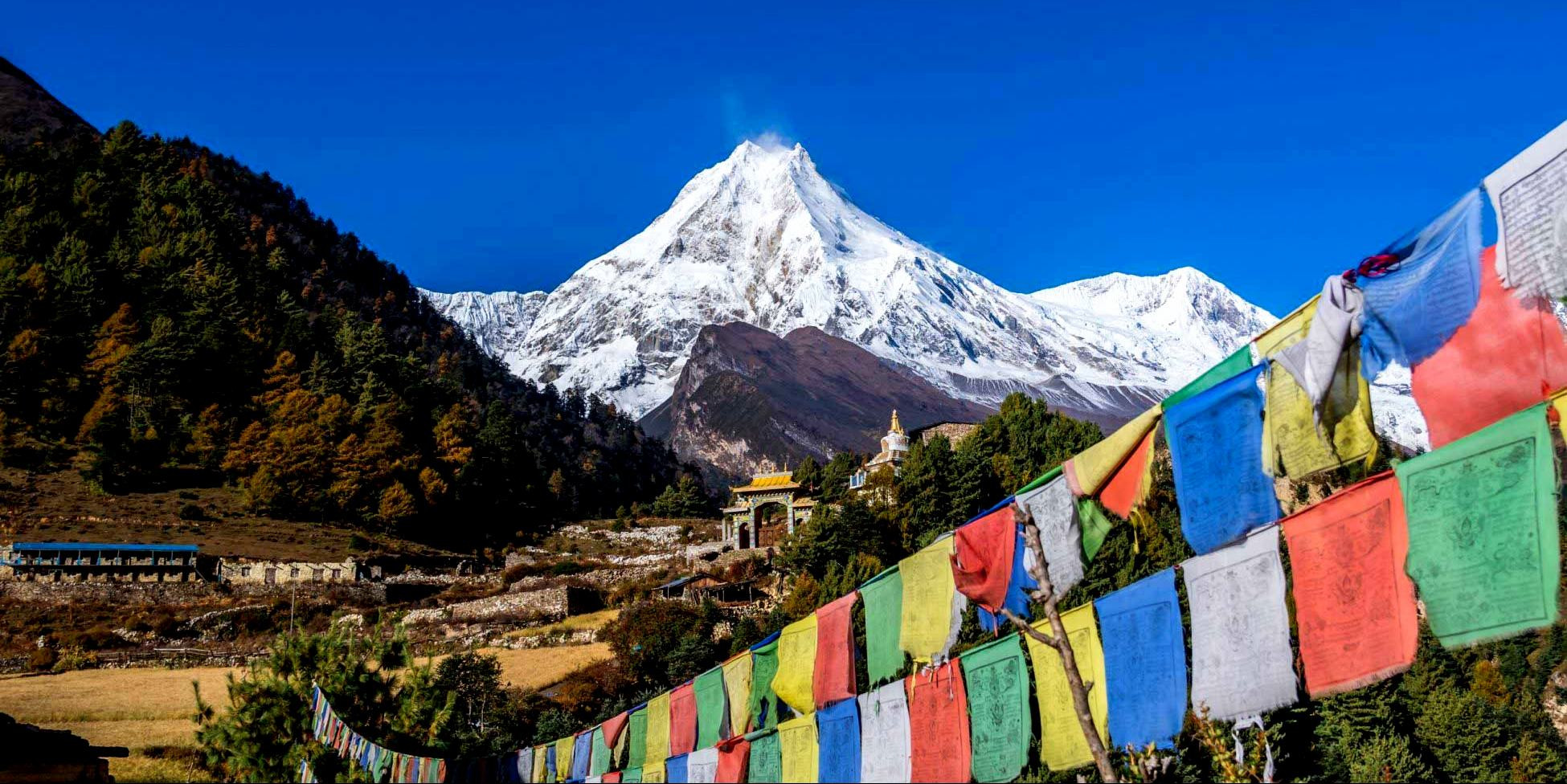
Key Features of the Manaslu Circuit Trek
-
Stunning Mountain Scenery: The trek circles the majestic Manaslu mountain, providing dramatic views of Manaslu (8,163 meters) along with a range of other peaks that extend along the border between Nepal and Tibet. The vistas include Himalchuli, Ngadi Chuli, and Shringi.
-
Larkya La Pass: One of the trek's highlights is crossing the Larkya La Pass, which at 5,106 meters is one of the higher and more challenging passes in the Himalayas. The pass offers extraordinary views of the Manaslu and nearby peaks, and crossing it is considered a significant achievement for any trekker.
-
Cultural Richness: The Manaslu Circuit passes through various ethnic villages, including those inhabited by the Nubri and Tsum people, whose Tibetan-influenced cultures provide a glimpse into traditional lifestyles that have remained largely unchanged over centuries. The trail also features ancient monasteries, chortens, and mani walls engraved with Buddhist prayers.
-
Biodiversity: The trek traverses diverse ecosystems, from the subtropical woodlands at lower altitudes to the alpine meadows and high-altitude deserts. This variety supports a wide range of flora and fauna, including the elusive snow leopard and the Himalayan Tahr.
-
Remote and Peaceful: Unlike the busier Everest and Annapurna treks, the Manaslu Circuit is less trafficked, offering a more serene and intimate experience with nature and local cultures.
Practical Information
-
Duration: The trek typically takes about 14 to 20 days, depending on the chosen route and pace, as well as additional days for acclimatization to prevent altitude sickness.
-
Difficulty: The Manaslu Circuit is considered challenging due to its length, altitude, and the remote nature of the trail. It is suitable for trekkers who are physically fit and have some experience with high-altitude trekking.
-
Best Time to Visit: The best seasons for the Manaslu Circuit Trek are during the spring (March to May) and autumn (September to November). These months provide the most stable weather conditions and clear views.
-
Permits: Since Manaslu lies in a restricted region, trekkers need special permits to access this area. Relax Getaways arranges all necessary permits, including the Manaslu Conservation Area Permit (MCAP), Annapurna Conservation Area Permit (ACAP), and the Restricted Area Permit (RAP).
-
Preparation: Adequate preparation is key for a successful trek. This includes physical training, proper gear (such as appropriate clothing, walking boots, and sleeping bags), and familiarity with high-altitude trekking conditions.
The Manaslu Circuit Trek with Relax Getaways allows adventurers to explore one of Nepal's hidden gems. With expert guides and well-organized logistics, trekkers can immerse themselves fully in the natural and cultural wonders of the Manaslu region, making for an unforgettable Himalayan adventure.
Tips for Best Tours in Nepal
When planning to explore the breathtaking landscapes and rich cultural tapestry of Nepal, it's crucial to prepare adequately to make the most of your journey. Here are some tips for ensuring that your tours in Nepal are both enjoyable and memorable:
-
Choose the Right Season: The best times for trekking and touring in Nepal are during the spring (March to May) and autumn (September to November). These seasons offer the clearest skies, the most favorable weather, and the best views of the Himalayas. Monsoon season (June to August) can be challenging due to heavy rains and leeches, especially on trekking routes.
-
Acclimatize Properly: Altitude sickness is a real concern in the high Himalayas. Ensure you have a planned itinerary that allows for gradual acclimatization, especially if you are trekking in areas like Everest Base Camp or Annapurna Circuit. Listen to your body and take symptoms of altitude sickness seriously.
-
Hire Knowledgeable Guides: Especially for treks and remote tours, hiring experienced and knowledgeable local guides can enhance your experience significantly. Guides not only provide valuable insights into the local culture and history but also ensure your safety on challenging terrains.
-
Respect Local Customs and Traditions: Nepal is rich in cultural diversity, with numerous ethnic groups and religions. Showing respect for local customs and traditions will enrich your interactions and experiences. Learn a few basic phrases in Nepali to connect better with locals.
-
Stay Hydrated and Healthy: Drink plenty of water, especially while trekking, as dehydration can exacerbate the effects of altitude sickness. Be cautious with food and water to avoid stomach issues; opting for cooked meals and avoiding tap water can help prevent traveler’s diarrhea.
-
Plan for Connectivity Issues: Many areas, especially remote trekking routes, have limited to no internet or cell phone connectivity. Plan accordingly by informing someone of your itinerary and expected return times.
-
Travel Insurance: Ensure you have adequate travel insurance that covers high-altitude trekking and medical evacuation, which is crucial for more remote and risky adventures in Nepal.
-
Be Environmentally Conscious: Preserve the natural beauty of Nepal by minimizing your environmental impact. Carry out all your trash, use water sparingly, and choose eco-friendly products.
-
Take Time to Explore: While trekking routes are a significant draw, don't miss out on exploring the vibrant city life of Kathmandu and Pokhara, the tranquil beauty of Lumbini, or the wildlife in Chitwan National Park. Each offers a unique perspective on the diverse beauty of Nepal.
By following these tips, your tour in Nepal will not only be a journey through some of the world's most stunning landscapes but also a deep dive into a rich cultural realm, leaving you with profound memories and experiences.
Ideal Time for Best Tours in Nepal
The ideal time for embarking on tours in Nepal largely depends on what you plan to do and where you want to go. However, there are generally two peak seasons which are most favorable for visiting Nepal, particularly for trekking and cultural tours:
Autumn (September to November)
-
Weather: This is considered the best time to visit Nepal. The weather is stable and dry, providing clear skies and excellent visibility, which is perfect for mountain treks.
-
Temperature: The temperatures are comfortably warm at lower elevations and cool at higher elevations, suitable for trekking.
-
Advantages: Autumn is post-monsoon; therefore, the landscapes are lush and the air is clean and fresh. The views of the Himalayan peaks are spectacular.
-
Activities: It's the perfect season for high-altitude treks, including popular routes like the Everest Base Camp, Annapurna Circuit, and Langtang Valley. Cultural festivals such as Dashain and Tihar (Diwali) occur during this time, offering travelers a chance to experience Nepal’s rich cultural heritage.
Spring (March to May)
-
Weather: Spring is another popular time for tourists, characterized by warmer weather and longer days.
-
Temperature: The temperatures gradually rise through these months, making it pleasant for trekking and touring.
-
Advantages: The trails and forests come alive with rhododendrons and other wildflowers in full bloom, especially in the Annapurna region. The weather is mostly stable and provides good mountain views, though not as clear as in autumn.
-
Activities: Ideal for all types of treks, especially those interested in botany and wildlife since the higher temperatures encourage diverse flora and fauna to thrive. This season is also suitable for adventure sports like paragliding, bungee jumping, and rafting.
Other Considerations
-
Winter (December to February): Winter can be a good time for cultural tours in lower altitude areas where the weather remains mild and the crowds are fewer. Trekking can still be done, especially at lower altitudes, but many high-altitude passes may be closed due to snow.
-
Summer/Monsoon (June to August): This season is least recommended for trekking due to the heavy rains, which make many trails slippery and obscured. However, the rain-fed landscapes are lush and vibrant, and it's a great time for keen botanists and those interested in agricultural practices as it's the planting season. Some regions like Mustang and Dolpo, which are in the rain shadow of the Himalayas, are more accessible and provide good trekking conditions even during the monsoon.
Choosing the right time for your visit can enhance your experience, whether you're trekking in the high mountains, participating in cultural tours, or exploring the diverse wildlife and lush landscapes of Nepal.
Nepal offers a captivating mix of high-altitude adventures, rich historical sites, and tranquil spiritual journeys, making it a perfect destination for all types of travelers. Whether you're drawn to the rugged trails of the Himalayas or the ancient streets of Kathmandu Valley, the best times to visit—autumn and spring—provide ideal conditions for exploring this vibrant country. With its welcoming people and diverse landscapes, a tour in Nepal, facilitated by Relax Getaways, promises not just a journey but a transformative experience that will leave lasting impressions.
FAQs for Best Tours in Nepal
Q: What is the best time of year to visit Nepal for trekking?
A: The optimal trekking seasons in Nepal are during the spring (March to May) and autumn (September to November). These months offer clear, dry weather, which is ideal for hiking and ensures the best views of the Himalayas.
Q: Do I need a visa to visit Nepal?
A: Most foreign nationals require a visa to enter Nepal. You can obtain a visa on arrival at the airport and major land borders, or beforehand from a Nepali embassy or consulate. Always check the most recent visa requirements ahead of your travel.
Q: What are the most popular treks in Nepal?
A: Popular treks include the Everest Base Camp Trek, the Annapurna Circuit, and the Langtang Valley Trek. These routes offer stunning natural scenery and a chance to experience the rich local cultures.
Q: How difficult are the treks in Nepal?
A: Trek difficulty varies. The Everest Base Camp and Annapurna Circuit are challenging due to their high altitudes and longer durations. Alternatively, the Poon Hill Trek is more manageable for beginners.
Q: Are guided tours available in Nepal?
A: Yes, Nepal offers a wide range of guided tours, from cultural tours in cities to guided treks in remote mountain areas. Guides provide valuable insights into the local culture and help ensure your safety.
Q: What should I pack for a trek in Nepal?
A: Essential items include sturdy hiking boots, a durable backpack, layered clothing for varying temperatures, a sleeping bag, personal medication, and a water purification method. Consult with your tour operator for a trek-specific packing list.
Q: Can I do a safari in Nepal?
A: Yes, you can experience a safari in Nepal at Chitwan National Park or Bardia National Park, where you might see rhinos, tigers, and a variety of birds.
Q: What cultural etiquette should I be aware of?
A: Nepali culture values modesty. Dress conservatively, remove your shoes before entering a home or temple, and use your right hand for eating and greeting. Always ask for permission before taking photos of people.
Q: How much does it generally cost to travel in Nepal?
A: Costs vary based on the type of tour and accommodation. Budget travelers might spend around $20-30 per day, while those on guided treks or in luxury accommodations could spend $100 or more per day.
Q: Is travel insurance required for visiting Nepal?
A: Travel insurance is strongly recommended, especially if your itinerary includes trekking or adventure activities. Make sure your insurance covers high-altitude trekking and emergency evacuation.
For the Nepal tour, please click here.
If you are looking for different kinds of Nepal Tours or Trekking Packages, feel free to contact us.
